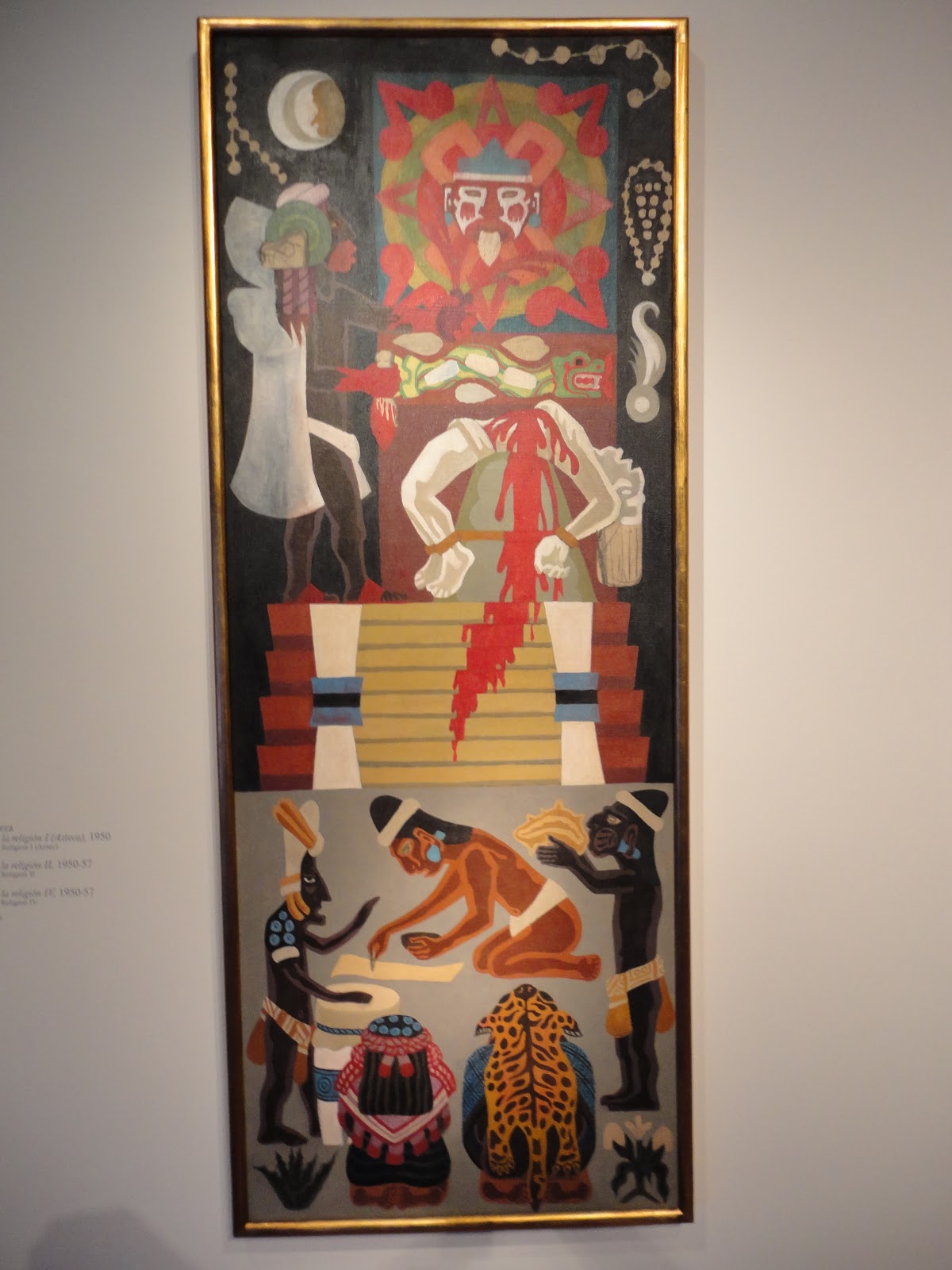I felt fortunate that there were docents available to give a tour through the museum. It was like no kind of museum tour I've ever experienced. To begin with, I was the only one on the tour -- so it was very personalized. And, of course, it was in Spanish. But instead of the guide giving explanations about the artist, the works, the background, etc. she asked my "What do you see in this painting?" So I had to explain to her what I was witnessing. The other interesting aspect of the tour is that the exhibit we saw was a thematic presentation of works in the permanent collection of the Museum.
This particular exhibition was entitled "A Century of criticism," The above picture at the entrance of the gallery is The Revolution gives back culture, by the great Mexican muralist David Alfaro Siqueiros.
It might no be too difficult to imagine, given Mexico's history, that one of the institutions that met with some of the artists' most vehement criticism was religion, and the church in particular. This is a tryptich by Diego Rivera, entitled The History of Religion.
Here's a closer look at the three panels, for maximum impact: 1. The Aztec Religion (note the bloody sacrifice)
2. The Greco-Roman religion:
(with more sacrifice -- note how Zeus/Jupiter is sticking a sword into the back of the other god)
3. The Christian Religion.
(interesting -- the Christ here, while wearing a crown of thorns, is not the suffering
Christ offering his life as a sacrifice.)
I won't offer my interpretation here, but will repeat for you the docent's question: "What do you see here?" (I think probably not something very complimentary to the Church.
Here is another fascinating cultural critique of the Church, by another important Mexican artist:
Note that given this perspective the viewer stands in the place where the priest would be, and the people on the floor of the church, with outstreched arms seem to be asking the viewer to do the work of the priest and intercede on their behalf. Note, too, the roof of the church is mostly missing, and there is a demonic figure holding the building together. What do you see here?
I also spent some time in the sculpture garden that surrounds the museum. An oasis of peace and beauty in the midst of the busy city.













